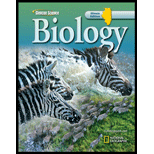
Concept explainers
To write: The idea that it was not a large evolutionary jump for aquatic arthropods to move onto land.
Introduction:
Arthropod, any member of the phylum Arthropoda, the biggest phylum in the animal kingdom, which consists such familiar forms as lobsters, crabs, spiders, mites, insects, centipedes, and millipedes. About 84 percent of all well known species of animals are members of this phylum. Arthropods are represented in each habitat on Earth and show a huge variation of adaptations. Several kinds live in aquatic environments, and others reside in terrestrial ones; few individuals are even adapted for flight.
Explanation of Solution
There are over 800,000 named species in the Phylum Arthropoda, together the familiar arachnids, crustaceans, and insects, collectively with a host of less familiar critters, like centipedes, millipedes and sea spiders. All arthropods have jointed appendages. This evolutionary innovation is might be the key to the great success of this diversified group. There are about 10 billion arthropods alive at any single time. Arthropods do everything with legs or modified legs. They walk, they swim, they creep and crawl, they use legs to sense with (the antennae), to bite and sting with, and even to chew with. That's the reason arthropods look so different when we see them up close. They chew sideways, and it is all done with legs. Their bodies are covered by a hard cuticle composed of proteins and chitin, a polysaccharide with added nitrogen groups. A cuticle is a hard outer cover of non living organic substance. The cuticle of arthropods functions as an exoskeleton.
Aquatic arthropods respire with gills. Terrestrial arthropods depend on diffusion via tiny tubes known as trachea. Trachea is cuticle-lined air ducts that branch throughout the body, and open in small holes called spiracles, located along the abdomen. Arthropods excrete bvia way of means of malphigian tubules; projections of the digestive tract that help conserve water. Terrestrial arthropods eliminate nitrogen as uric acid, as do birds. Their waste is sort dry, a superb adaptation to life on land.
Chapter 27 Solutions
Biology Illinois Edition (Glencoe Science)
Additional Science Textbook Solutions
Introductory Chemistry (6th Edition)
Chemistry: The Central Science (14th Edition)
Human Physiology: An Integrated Approach (8th Edition)
Physics for Scientists and Engineers: A Strategic Approach, Vol. 1 (Chs 1-21) (4th Edition)
Chemistry: An Introduction to General, Organic, and Biological Chemistry (13th Edition)
Anatomy & Physiology (6th Edition)
- Despite two individuals having high BMI with similar values, one person is more susceptible to cardiovascular disease than the other. This persons's obesity is known as Group of answer choices genetic obesity dietary obesity android obesity gynoid obesityarrow_forwardIt is generally believed that earlier adaptation to cold would affect survival in hypoxia. This effect is known as- Group of answer choices habituation negative acclimatization positive acclimation accommodationarrow_forwardHow is convection altered in a hot sauna room? What would be the net heat exchange? Use appropriate formula to explain.arrow_forward
- How have the Arctic Inuits (people living in the Arctic) been able to stay in such cold conditions for so long? List and explain your reasons.arrow_forwardRecently I saw an action movie where the kidnappers accidentally killed the business tycoon by immersing his face in ice water. What could be the cause of death in this case? Group of answer choices vasodilation of peripheral vessels restriction of limb movement cardiac arrhythmia inability to open the eyesarrow_forwardBesides lack of food, what are the other physiological conditions that exacerbate the effects of starvation in developing countries?arrow_forward
- 1. A few years back, the faculty in Biology department faced complete loss of their research labs and office space due to unexpected flooding. This was early in the morning when students had come on-campus for their classes and faculty were ready to start teaching. a. Briefly explain the pathway that would have been activated in this acute stress. b. Also, considering that it was a while before things resumed to normal, explain what the effects of chronic stress under such conditions were.arrow_forwardwhich produces such as Cellular Respiration begins with NAD+ which is broken down during, to make which produces which occurs in the in the presence of anaerobic respiration that is used in pyruvate that is used in aerobic respiration alcohol such as which produces which is used in the to make 32 ATP -which produces which occurs in the starting with which occurs in thearrow_forwardDay 3-A: Venn Diagram Directions: Using the Venn diagram, describe a pure substance using the properties of elements and compounds. Write only the letters corresponding to your responses. PURE SUBSTANCE ELEMENTS COMPOUNDS A. It is the simplest form of matter.. B. It cannot be separated into simpler components by chemical means. C. It is made by two or more elements combined. D. It serves as the building block of other substances. E. Examples are oxygen, hydrogen, carbon, and gold. F. It can be separated into simpler substances by chemical means. G. It is represented by a chemical formula. H. Examples are water, sugar, salt, and baking soda. 3arrow_forward
- Describe in details the two molecular processes in steroid and peptide actionarrow_forwardCan you choose one topic of interest associated with microbiology, human diseases and / or human health.arrow_forwardPatients identified as at risk for falling are the most likely to suffer an Unanticipated Physiological fallarrow_forward
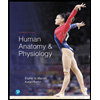 Human Anatomy & Physiology (11th Edition)BiologyISBN:9780134580999Author:Elaine N. Marieb, Katja N. HoehnPublisher:PEARSON
Human Anatomy & Physiology (11th Edition)BiologyISBN:9780134580999Author:Elaine N. Marieb, Katja N. HoehnPublisher:PEARSON Biology 2eBiologyISBN:9781947172517Author:Matthew Douglas, Jung Choi, Mary Ann ClarkPublisher:OpenStax
Biology 2eBiologyISBN:9781947172517Author:Matthew Douglas, Jung Choi, Mary Ann ClarkPublisher:OpenStax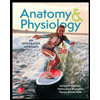 Anatomy & PhysiologyBiologyISBN:9781259398629Author:McKinley, Michael P., O'loughlin, Valerie Dean, Bidle, Theresa StouterPublisher:Mcgraw Hill Education,
Anatomy & PhysiologyBiologyISBN:9781259398629Author:McKinley, Michael P., O'loughlin, Valerie Dean, Bidle, Theresa StouterPublisher:Mcgraw Hill Education,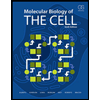 Molecular Biology of the Cell (Sixth Edition)BiologyISBN:9780815344322Author:Bruce Alberts, Alexander D. Johnson, Julian Lewis, David Morgan, Martin Raff, Keith Roberts, Peter WalterPublisher:W. W. Norton & Company
Molecular Biology of the Cell (Sixth Edition)BiologyISBN:9780815344322Author:Bruce Alberts, Alexander D. Johnson, Julian Lewis, David Morgan, Martin Raff, Keith Roberts, Peter WalterPublisher:W. W. Norton & Company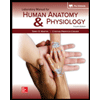 Laboratory Manual For Human Anatomy & PhysiologyBiologyISBN:9781260159363Author:Martin, Terry R., Prentice-craver, CynthiaPublisher:McGraw-Hill Publishing Co.
Laboratory Manual For Human Anatomy & PhysiologyBiologyISBN:9781260159363Author:Martin, Terry R., Prentice-craver, CynthiaPublisher:McGraw-Hill Publishing Co.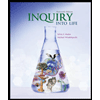 Inquiry Into Life (16th Edition)BiologyISBN:9781260231700Author:Sylvia S. Mader, Michael WindelspechtPublisher:McGraw Hill Education
Inquiry Into Life (16th Edition)BiologyISBN:9781260231700Author:Sylvia S. Mader, Michael WindelspechtPublisher:McGraw Hill Education





